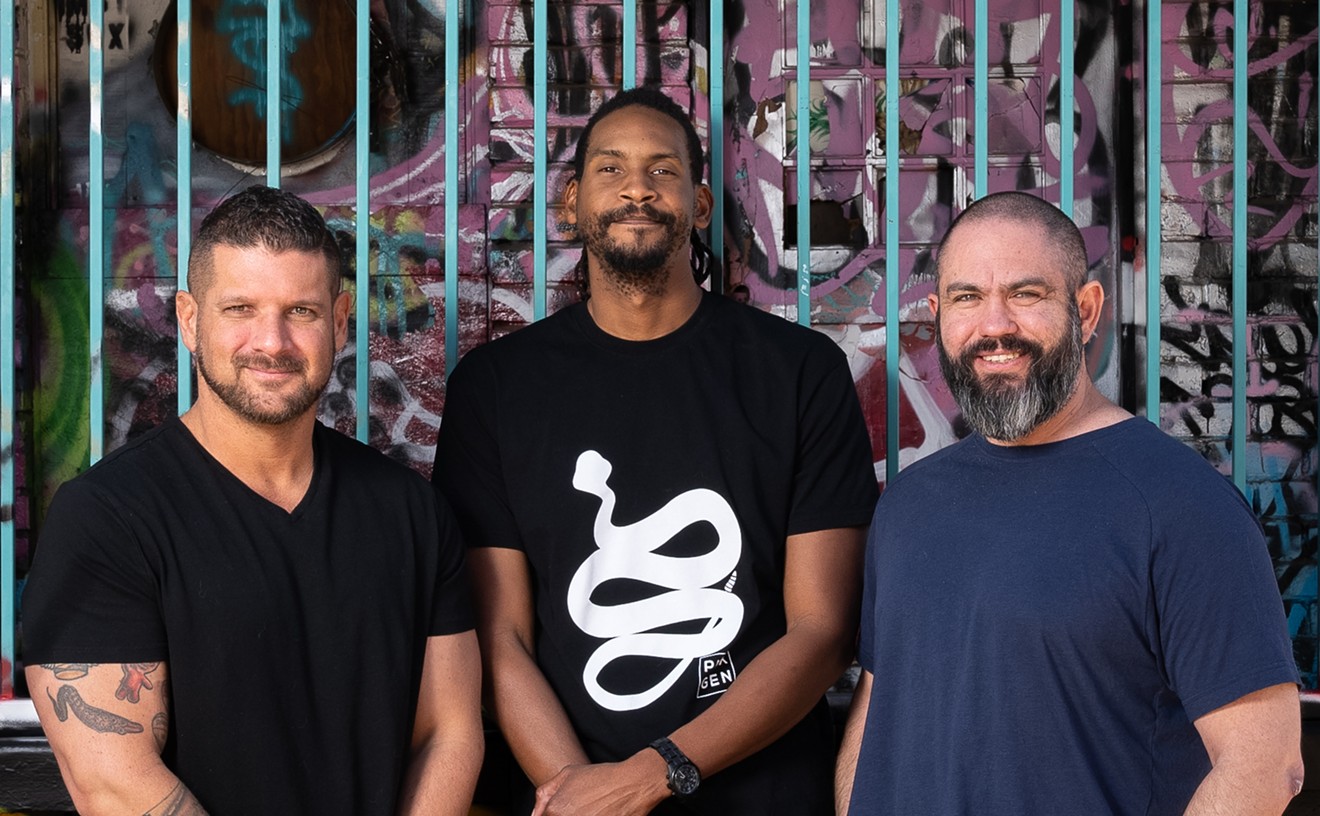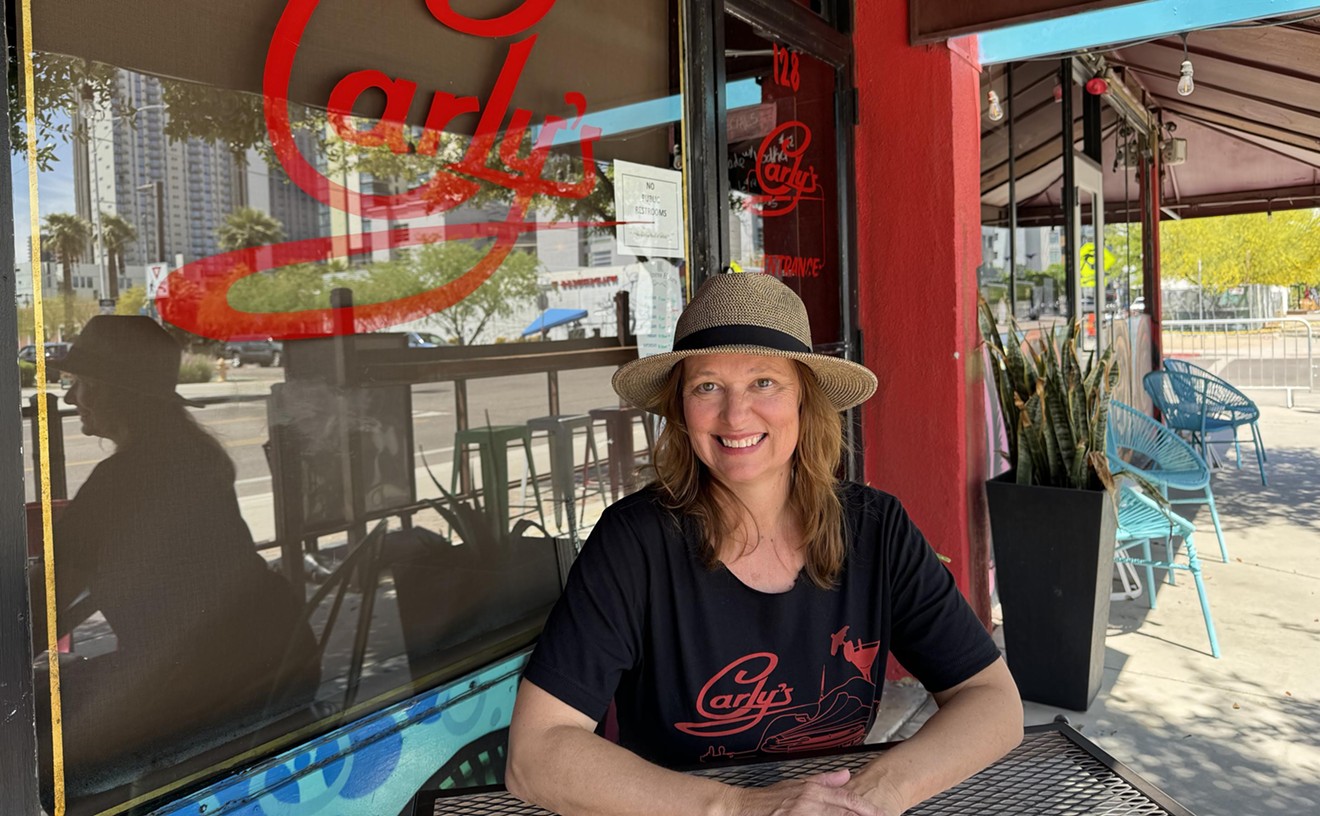In this occasional series, Pavle Milic (co-owner of FnB, Baratin, Bodega and AZ Wine Merchants in Scottsdale) will spill about his current mission to learn how wine is made -- literally from the Southern Arizona ground up. Today: the harvest.
Momentary Suspension of Reality
I have made the drive to Elgin's Dos Cabezas WineWorks many times, but this time -- at dawn on a mid-September day -- I feel an extra sense of ease as I exit onto State Route 83 from the I-10. Perhaps it's the majestic panorama that elicits a mood shift or the fact that I'm getting farther away from all things urban and going toward beautiful rural Arizona. It also helps that I'm listening to Baltimore's Beach House's latest album: "Bloom."
Or maybe it's the fact that it's finally time for the harvest.
See Also: - Pavle Milic's Quest to Make Wine: A Quixotic Exploit? - Pavle Prunes the Vines -- and Keeps an Eye out for Rattlesnakes - Pavle Prepares to Harvest the Grapes and Reveals the Blend
Time to clean the press before the grapes arrive.
At the Winery
Normally Dos Cabezas winemaker Todd Bostock will be at the winery around 7 am to get ready for the arrival of the grapes from the Cimarron Vineyard in Willcox. While waiting for the grapes, Todd and Kelly (his wife and assistant winemaker) get ready for Crush.
(I try to get there earlier so that I can sneak in a run. For those of you who like to run, Elgin is beautiful in the morning -- just a few days ago it was in the upper sixties. The landscape is so expansive it feels like anything is possible.)
Upon coming back I check that I have all the things I need for the day: sunscreen, hat that covers the neck, rubber boots, change of clothes, water and maybe a few items pilfered from the Bodega to snack on for lunch.
Winemaking really involves a plethora of details. In this regard it is redolent of the restaurant business. The following are just a mere fraction of all the things involved in this industry:
Upon arrival I ask Todd what he needs me to do. "Do you want to clean the press" Todd asks, and really the only answer that exists is "Of course." The press is a cylindrical structure that has a membrane inside that inflates and delicately squeezes the grapes. It has a small door. Basically I climb in and clean it. The inflatable membrane has some creases so I have to make sure that there was no residue from the last batch pressed.
Warning: If you suffer from any degree of claustrophobia, do not clean the press. And, if you don't like physical work, don't get into the wine making business.
After cleaning the press, Todd has me do punch downs. Inside the winery there are six bins already housing some grapes that were destemmed a few days earlier. The main goal is to submerge the cap (grape skins that float to the top as fermentation starts). By breaking the cap you help increase extraction of both color and flavor. It is also very important to keep the cap moist to inhibit any bacterial growth. The tool used to punch down the cap looks like a potato masher and it's made of stainless steel. (Although Todd also has one that Dick Erath gave him that looks like a wooden bat.) The best way to perform this task is to climb onto the bin and use your body's weight to help punch down. To this day I have not fallen in. Fingers crossed still.
But that's not all.
At the winery there are always two plastic barrels, one filled with a Water-ProxyClean solution and the other with a Water-Citric Acid solution. So for example: When I am done with the punch-downs, I submerse the punch down tool into the ProxyClean to sanitize and then into the citric Acid barrel to rinse off. Virtually every tool utilized in the winery has to undergo the same procedure. Again, cleanliness is paramount in wine making.
Todd gets off the phone with Juan Alba (his vineyard manager). The grapes will arrive half an hour. Todd then goes straight to get the de-stemmer ready. The machine does exactly that: separate the grapes from the stems. The grapes arrive in "FYBs"-Fn...yellow bins-I'll let you figure out what the "Fn" part means. The bins are perforated with holes to allow air to flow and keep the grapes cool. Juan and his son get on top of a platform to start dropping the clusters into the de-stemmer. The separated grapes drop into large plastic bins.
Most Embarrassing Moment of 2012
On this day I am in charge of placing the bin right underneath the de-stemmer. Underneath the bins and only on two sides there are openings or grooves where you can slide a forklift to move it. To everyone's chagrin -- and a sign of my blatant disregard for common sense -- I push the bin while empty under the de-stemmer with the grooves not exposed. This means that once the bin is full of grapes and really heavy we can't use the forklift.
Major ouch. Needless to say I am very embarrassed. "You probably won't make that mistake again Pavle," Todd tells me. Darn right I won't. He and Juan wrap the bin with belts while I lift it from the side with the manual forklift. Then Todd slides under the bin with the gas operated forklift. That blunder costs us forty five minutes. Especially during crush, time is very important because you want to get the grapes out of the heat to inhibit any premature fermentation. Just look at the image below.
The following two hours are filled with this sequence of events: 1- Todd transports the grapes in the FYBs onto the platform. 2- Juan and his son Alberto start dropping grape clusters into the de-stemmer. 3- Todd turns on de-stemmer. 4- Juan and his son start dumping the FYBs onto the floor.
5- I grab FYBs and take them to the man of international mystery JR. (We don't know what he does for a living and he won't tell us, but today he's here to powerwash FYBs.) Todd thinks he's into corporate espionage. I'm from Colombia, I know when to stop asking questions. So, JR and I are in charge of power washing them and stacking them so they can be transported back to Willcox for the next day's batch.
6- After the vin fills up with grapes, Todd transports the grapes into the winery where is really cool.
7-Repeat the aforementioned a lot of times. Did I mention a lot of times?
After all the grapes are destemmed we have a bite. Then go back to get samples of grapes fermenting. Todd checks for sugar levels, Ph Levels and temperature. Once the grapes start fermenting they require very close monitoring. While he checks the samples, Kelly and JR clean up. I help to clean up as much as I can until I have to head back to put on the apron at FnB. Status Quo
All of the grapes for my blend are in barrel now. The Tempranillo went into two different barrels. One neutral/used barrel and one brand new French barrel. The Primitivo also went into a neutral barrel and the Syrah-which was fermented with Viognier skins to add pretty aromatics- as well. Each barrel houses approximately 25 cases.
While talking to Todd about the blend I told him I wanted a wine that was easy drinking, almost delicate so that it would be more versatile when pairing with food, mainly Charleen Badman's food at FnB where we will have the wine available next year in the fall. So I thought I would want to use all neutral barrels to keep the wine fruity and quaffable. Todd advises that I use at least one brand new French barrel to give the overall blend more textural complexity...a little umph.
In the interim, the wine continues to be monitored. The blend is still unnamed.
Editor's Note: This post was edited from its original version.










